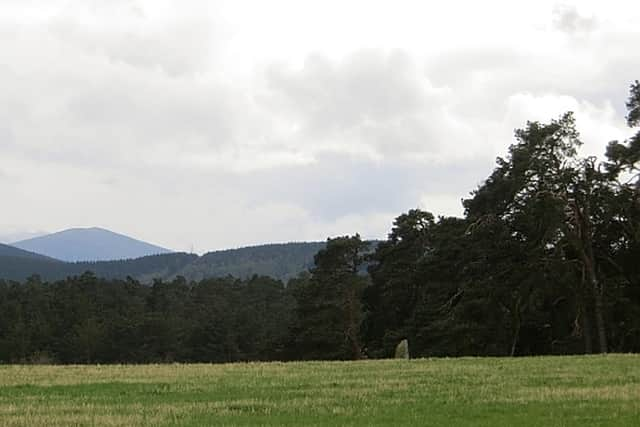Ancient Scottish standing stones to be protected from 'rubbing' cows
Upper Port Standing Stones at Cromdale near Grantown-on-Spey stand in a farmer’s field, with two of the four stones long toppled over.
The farmer has now applied to Historic Environment Scotland (HES) for permission to enclose the stones with fencing and barbed wire to protect them from his cattle.
Advertisement
Hide AdAdvertisement
Hide AdAn application to HES said: “These fields are required for livestock feeding year round. Fencing off will prevent poaching in the immediate vicinity and stock rubbing.”
The stones measure between 1m and 2m in height and have been roughly shaped from whinstone. HES said the stones were of national importance given their potential to contribute to Scotland’s understanding of prehistoric ritual practices.
The scheduled monument covers a 20m radius around each of the two individual standing stones with the paired stones, which have fallen over, protected by a rectangle of 22m by 20m.
The farmer is seeking scheduled monument consent to close off a smaller area and has proposed fencing off each of the individual stones, leaving just under 2m of protected space around each. The fallen stones will sit in a far bigger enclosure, which will measure around 7m by 3.5m.
The application states: “A large area around the fallen stone cannot be fenced off in order to preserve access to an adjacent field.”


HES has welcomed the application. A statement from the heritage body said : “The standing stones are located in an agricultural field used for grazing cattle. Two of the four standing stones fell around 20 years ago. The proposed fencing will help to protect the stones and their stone settings from inadvertent cattle damage.
"We welcome the positive management initiative, which will help to secure the long-term preservation of the monument and will be determining the application for scheduled monument consent in due course.”
Standing stones are found scattered across the Badenoch and Strathspey area. One circle, the Rath of Kingussie, was a circle of standing stones used for judicial purposes. In 1380, Alexander Stewart, Lord of Badenoch held his court at the site.
"The Raich is still known, but the stones are gone,” one account of the site said.
Comments
Want to join the conversation? Please or to comment on this article.